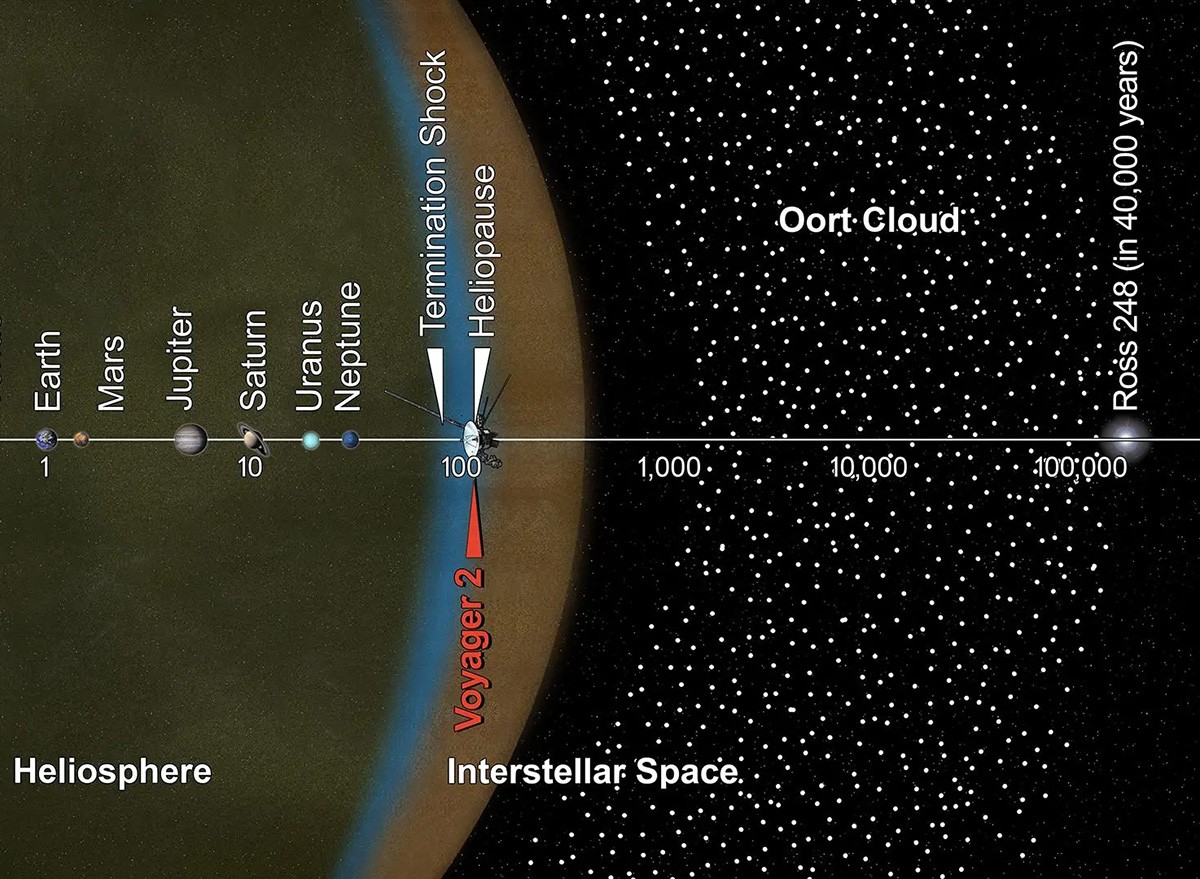Comet Likely Last Seen by Neanderthals Set to Dazzle Night Sky Tonight

Sky-gazers will see something tonight that hasn’t been seen for 80,000 years—Comet Tsuchinshan-ATLA, making its closest approach to Earth on Saturday night. “It’s not going to zing across the sky like a meteor. It will just appear to hang there, and it will slowly change position from night to night,” Bill Cooke, lead of NASA’s Meteoroid Environment Office at the Marshall Space Flight Center in Huntsville, Alabama, tells CNN. “If you can see (the comet) with your unaided eye, (using) the binoculars will knock your socks off.” Here’s what you need to know about this once-in-a-lifetime cosmic event.
RELATED: How to See a “Once-in-a-Lifetime” Comet.
Where Does the Comet Come From?

The ancient comet comes from the Oort Cloud, “a mostly spherical collection of comets barely bound to our Solar System thousands of times (farther) away from the Sun than we are,” astronomer Dr. Teddy Kareta, a postdoctoral associate at Lowell Observatory in Flagstaff, Arizona, tells CNN. “For many people, and especially children, seeing a bright comet in the night sky is a beautiful and life-changing experience. Even if every couple of years a comet might be barely bright enough to be seen with your naked eye, comets that have a potential to be easily visible to many are rare. If you can try to see it, you should — and you should take whoever you can with you so they can experience it too.”
Ancient Comet

The comet was discovered in 2023 by the Purple Mountain Observatory in China and Asteroid Terrestrial-impact Last Alert System (ATLAS) telescope in South Africa. It would have last been seen in Neanderthal times.
How Visible Is the Comet?

The brightness of comets is measured on the same scale we use for stars. “The latest data estimates Tsuchinshan-ATLAS’s brightness at between 2 and 4,” says NASA. “In comparison, the brightest visible star in the night sky, Sirius, has a magnitude of –1.46. At its brightest, solar reflection from Venus is a magnitude of –4. The International Space Station sometimes achieves a relative brightness of –6.”
Do I Need Binoculars?

According to Cooke, the comet is much likelier to be visible to the naked eye if there is something called forward scattering, where sunlight bounces off the debris in the comet’s tail. “If there is a lot of forward scattering, the comet could be as bright as magnitude –1,” Cooke says. That could make it “visible to the unaided eye or truly spectacular with binoculars or a small telescope.”
RELATED: Comet May Become Brighter Than the Stars.
Where Can I See the Comet?

Wait till just after nightfall to see the comet, as it’s highly unlikely to be seen in daylight. Use binoculars if possible. “Looking to the southwest, roughly 10 degrees above the horizon, identify the constellations of Sagittarius and Scorpio,” NASA says. “Tsuchinshan-ATLAS should be visible between them. By Oct. 14, the comet may remain visible at the midway point between the bright star Arcturus and the planet Venus. If you can’t see the comet from where you live, the Virtual Telescope Project in Italy will host a live feed.
What Will Happen To Tsuchinshan-ATLAS?

Scientists are not certain of what will happen to the comet, if it will be flung out into the solar system “like a stone from a sling”, NASA says. “I learned a long time ago not to gamble on comets,” Cooke says. “We’ll have to wait and see.”